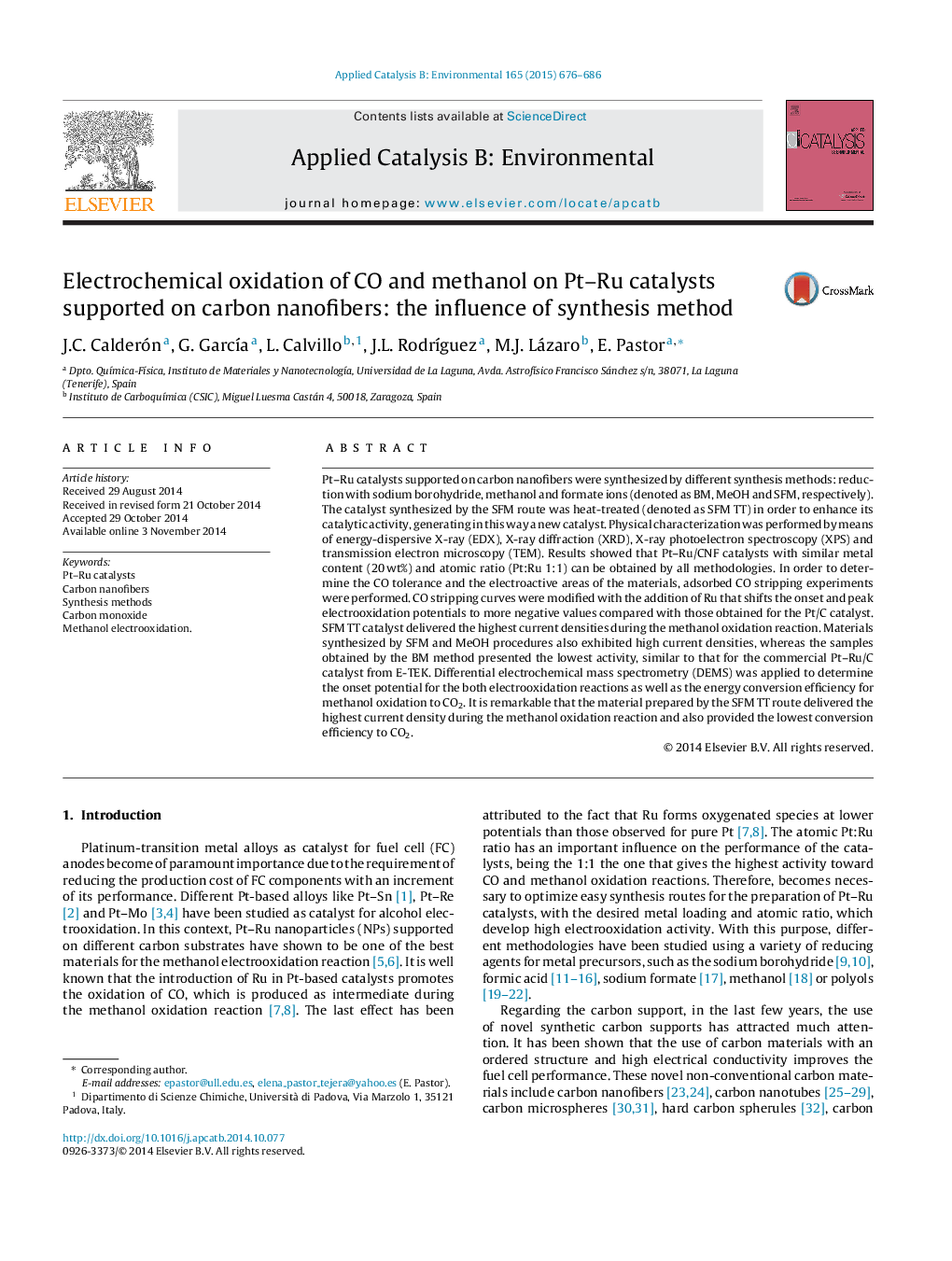| Article ID | Journal | Published Year | Pages | File Type |
|---|---|---|---|---|
| 45601 | Applied Catalysis B: Environmental | 2015 | 11 Pages |
•Pt–Ru catalysts supported on carbon nanofibers were synthesized by different methods.•Physicochemical properties and activities of catalysts depend on the synthesis route.•Thermal treatment induces the formation of crystalline Ru oxides.•DEMS allows establishing the energy efficiency conversion of methanol to CO2.•Thermal-treated material displays the best results in terms of current density.
Pt–Ru catalysts supported on carbon nanofibers were synthesized by different synthesis methods: reduction with sodium borohydride, methanol and formate ions (denoted as BM, MeOH and SFM, respectively). The catalyst synthesized by the SFM route was heat-treated (denoted as SFM TT) in order to enhance its catalytic activity, generating in this way a new catalyst. Physical characterization was performed by means of energy-dispersive X-ray (EDX), X-ray diffraction (XRD), X-ray photoelectron spectroscopy (XPS) and transmission electron microscopy (TEM). Results showed that Pt–Ru/CNF catalysts with similar metal content (20 wt%) and atomic ratio (Pt:Ru 1:1) can be obtained by all methodologies. In order to determine the CO tolerance and the electroactive areas of the materials, adsorbed CO stripping experiments were performed. CO stripping curves were modified with the addition of Ru that shifts the onset and peak electrooxidation potentials to more negative values compared with those obtained for the Pt/C catalyst. SFM TT catalyst delivered the highest current densities during the methanol oxidation reaction. Materials synthesized by SFM and MeOH procedures also exhibited high current densities, whereas the samples obtained by the BM method presented the lowest activity, similar to that for the commercial Pt–Ru/C catalyst from E-TEK. Differential electrochemical mass spectrometry (DEMS) was applied to determine the onset potential for the both electrooxidation reactions as well as the energy conversion efficiency for methanol oxidation to CO2. It is remarkable that the material prepared by the SFM TT route delivered the highest current density during the methanol oxidation reaction and also provided the lowest conversion efficiency to CO2.
Graphical abstractFigure optionsDownload full-size imageDownload as PowerPoint slide
